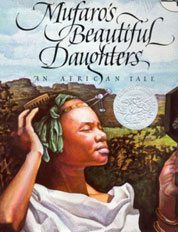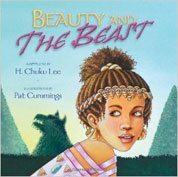by Jacqueline Briggs Martin and Phyllis Root
 We want to start by saying that we are loving the chance to look at forgotten books or wonderful classics from the past that this blog has given us. And this time, when we were thinking of what we might look at, John Steptoe came to mind— maybe because we were considering possibilities in August and he died in August of 1989. We all remember Steptoe was one of the first African Americans to write and illustrate children’s books. He was brilliant, wrote his first book, Stevie, when he was sixteen years old, and was only eighteen when it was published. He wrote and illustrated many other books in his short life. (He died at age 39).
We want to start by saying that we are loving the chance to look at forgotten books or wonderful classics from the past that this blog has given us. And this time, when we were thinking of what we might look at, John Steptoe came to mind— maybe because we were considering possibilities in August and he died in August of 1989. We all remember Steptoe was one of the first African Americans to write and illustrate children’s books. He was brilliant, wrote his first book, Stevie, when he was sixteen years old, and was only eighteen when it was published. He wrote and illustrated many other books in his short life. (He died at age 39).
One of his best known is Mufaro’s Beautiful Daughters (1987). We think this is a classic. The daughters are indeed beautiful, the setting is beautiful and so carefully rendered that we wanted to touch the stones and caress the birds. For this re-telling of a Zimbabwean folktale Steptoe researched the flora and fauna of Zimbabwe for two years. And though it reads like a folk tale, the illustrations are done with such care that when we read it we almost believe it had happened. Of course a green snake could become a handsome African king.
The story is lovely. Mufaro has two daughters who look beautiful but only one who acts with beauty and grace. Manyara is “almost always in a bad temper. She teased her sister whenever their father’s back was turned, and she had been heard to say, ‘Someday, Nyasha, I will be a queen, and you will be a servant in my household.’” Nyasha grows vegetables, and is so kind that birds are not afraid to be close and a snake becomes her companion. Because her beauty is internal and external, she is the one chosen by the king and Manyara becomes her servant.
It’s a great experience to read his books now and think back on how revolutionary they must have seemed when they were published. He was revolutionary and visionary. He wanted to write books in which African American children could see themselves and be proud of their culture. And that is so similar to what we want today with the campaign We Need Diverse Books. We found ourselves profoundly wishing that he had lived to give us more books, lived to comment on the reading lives of children.
Wendy Watson did a lovely appreciation of John Steptoe’s art in her blog in August 2014.
 We found a more recent re-telling of an old tale on the Kirkus “Best Books of 2014 Which Feature Diverse Characters” list–Beauty and the Beast by H. Chuku Lee and illustrated by his wife Pat Cummings. Once again we have beautiful daughters – three who present their father with a long list when he goes to the city and one who only asks for a rose. The story is set in West Africa and is told in the first person by “Beauty,” in direct and expressive language. And the illustrations are fascinating, full of detail and pattern, done with care and respect. This is what H. Chuku Lee said about writing this book in The Horn Book (June 2015):
We found a more recent re-telling of an old tale on the Kirkus “Best Books of 2014 Which Feature Diverse Characters” list–Beauty and the Beast by H. Chuku Lee and illustrated by his wife Pat Cummings. Once again we have beautiful daughters – three who present their father with a long list when he goes to the city and one who only asks for a rose. The story is set in West Africa and is told in the first person by “Beauty,” in direct and expressive language. And the illustrations are fascinating, full of detail and pattern, done with care and respect. This is what H. Chuku Lee said about writing this book in The Horn Book (June 2015):
Our version of “Beauty” is an act of hope, the belief that when given a new and different perspective on an accepted story with universal themes of love, magic, and promises made, we can transcend the notion that only some people are equipped for change. That universal feelings like love, fear, and hope are in fact found in all people. And that the story is just as powerful no matter what the cultural setting. Most audiences appreciate and even cheer at the idea that someone would sacrifice her own safety in the hope of protecting someone she loves. And that kindness and love can magically transform a beast into a prince.
And Pat Cummings’s comments:
His [H. Chuku Lee’s] version, told from Beauty’s point of view, seemed elegant and contemporary. And I wanted to update Beauty as well, to show her as a young woman of color whose world clearly evokes Africa. The Beast’s scarifications even suggest a particular tribe. But although classics transcend time, trends, and cultures, some elements of the story seemed etched in stone: it had to be a rose, and the Beast had to be part animal. “Beauty and the Beast” has more than its share of classic themes: love conquers all, true beauty lies within, appearances can be misleading, magic can save the day…But Chuku hit upon one I hadn’t considered before, one that resonated with me while illustrating the story. For me, it has become the new timeless theme at the heart of the story: the power of a promise.
Our only complaint is that the Beauty on the cover is quite a bit lighter than the Beauty in the book. It will be a wonderful day when that is not so. But we have hope. And the power of the promise to strive to do better, to value all the peoples of the world and all the colors of the world.

What a pleasure to read your comments on these two books. You make me want to run to the library to read them and to enjoy the illustrations. Thank you.
Phyllis, BIG MOMMA MAKES THE WORLD is one of my favorite books. And I’m glad to hear that you are still writing and winning awards.
Norma Gaffron
And what a pleasure to hear from you, Norma. Yes, read them and enjoy them. And I hope you are still telling your wonderful stories.
Thank you for bringing back John Steptoe’s work. His early death was a tragedy for children’s books as well as for his family and friends. When my own kids were young, Steptoe’s picture book about his children was a favorite in our house. I can no longer find it online and it wore out from many readings, but I think it was called Bweella and Jabaka (and I’m sure that I’m spelling it wrong). I remember being stunned when I realized how young he was when he wrote it.
correction: Steptoe’s children were named Bweela and Javaka. My apologies.
“Mufaro’s Beautiful Daughters” was a revelation to my family. I remember one of the girls coming home so excited about it, after her school librarian read it. Sad to say, at that time our house had very few books of folktales, almost none with characters of color. That changed very quickly. Thanks for this lovely, thoughtful tribute.